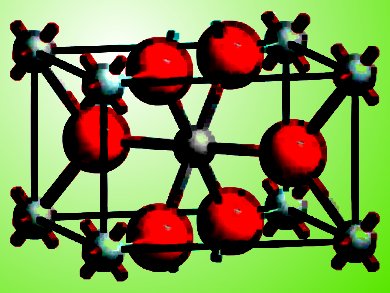Rutile MnO2 is an important material for energy storage and catalysis applications. David A. Tompsett, Stephen C. Parker, and M. Saiful Islam, University of Bath, UK, have performed a detailed density functional theory (DFT) investigation of its surfaces to find out what surface characteristics are important to electrochemical performance and catalytic activity.
A Wulff construction from relaxed surface energies indicates a rod-like equilibrium morphology that is elongated along the c-axis. This is consistent with the large number of nanowire-type structures that are obtainable experimentally. The (110) surface dominates the crystallite surface area. Higher index surfaces, for instance, the (211) and (311) surfaces, also cap the rod-like morphology.
Broken coordinations at the surface result in enhanced magnetic moments at Mn sites. These may play a role in catalytic activity.
The formation energies to form surface oxygen vacancies are considerably lower than for comparable structures like rutile TiO2. The team thinks that this is important to the good catalytic activity of rutile MnO2.
- Rutile (β-)MnO2 Surfaces and Vacancy Formation for High Electrochemical and Catalytic Performance,
David A. Tompsett, Stephen C. Parker, M. Saiful Islam,
J. Am. Chem. Soc. 2014.
DOI: 10.1021/ja4092962




